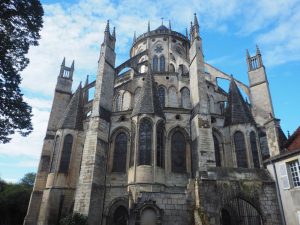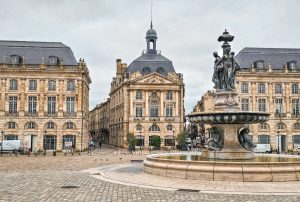Te Henua Enata – The Marquesas Islands
A remote group of Polynesian islands with wonderfully diverse and unique ecosystems on land and in the sea.

A remote group of Polynesian islands with wonderfully diverse and unique ecosystems on land and in the sea.

A former island, now land-locked, that illustrates the battle that the people of the Netherlands have fought against the sea over many centuries.

Four 19-century palaces in the Romantic and eclectic style, set in stunning natural landscapes.

An artists’ colony used for experimentation in architecture, arts and design at the turn of the 20th century.

A former shale-oil mine that contains a wealth of remarkably well-preserved fossils from a 47-million-year-old Eocene ecosystem.

A well-preserved 1st-century Roman theater and a triumphal arch nearby with unique bas-relief images.

Seventy-eight locations along four medieval pilgrimage routes leading to the Santiago de Compostela in Spain.

Primeval forests of European beech trees that survived the last Ice Age and then spread across Europe, now protected in 93 locations across 18 countries.

Two 11th-century churches exemplifying Ottonian Romanesque architecture and art.

12 sites designed for Louis XIV by the innovative military engineer Sebastien de Vauban in the late 17th-18th centuries.

A collection of shelters used by prehistoric people, many containing impressive Paleolithic works of art.

A railway route through the Swiss Alps that represents an outstanding early-20th-century engineering and architectural achievement.

A feat of hydraulic engineering from the Industrial Revolution, used to move vessels between very differing water levels.

A site dating to thousands of years ago where flint was mined to create axes and other tools.

A grandiose 17th-century lighthouse meant both for navigation and for projecting an image of royal power.

A Romanesque masterpiece and the charming village around it, historically significant in terms of medieval Christianity.

A monastic community whose ideals of poverty and self-sufficiency are reflected in the structures they built.

A magnificent Gothic cathedral with stunning stained-glass windows.

A Romanesque church painted with vivid murals dating to the 11th and 12th centuries, important in the study of medieval Christian art.

A well-preserved classical Roman temple from the 1st century AD, dedicated to the heirs of Emperor Augustus.

An innovative hydraulic system that has provided clean water and power to Augsburg for centuries.

A 13th-century Gothic cathedral of extraordinary workmanship and beauty.

The central plaza in Brussels, surrounded by beautiful old guild houses, a Gothic city hall and other impressive historical architecture.

Precisely-defined plots of land with distinct geological and climatic conditions that contribute to a centuries-old tradition of winemaking.

A port city of opulent architecture, especially classical and neo-classical, and the center of a centuries-old wine-producing region.

A picturesque area of countryside and villages surrounded by a vineyard landscape; also an important pilgrimage stop.

A 12th-century cathedral with a mix of Romanesque and Gothic elements.

A beautiful vineyard-covered landscape of terraced hillsides, almost a thousand years old.

A monument of religious architecture from the Carolingian period of European unification under Charlemagne.

A magnificent 16th-century royal palace, particularly important for its artwork.

A picturesque segment of the Danube Valley with beautiful scenery and charming towns and villages.

A beautiful river valley landscape dotted with stunning castles and charming medieval towns.

Palaces and other structures that tell the story of the 70-year sojourn in France of the Catholic papacy in the 14th century.

A 360-km canal plus locks, tunnels and bridges: a 17th-century feat of engineering.

Three medieval structures central to the history of Christianity and coronations in France.

Three elegant 18th-century city plazas.